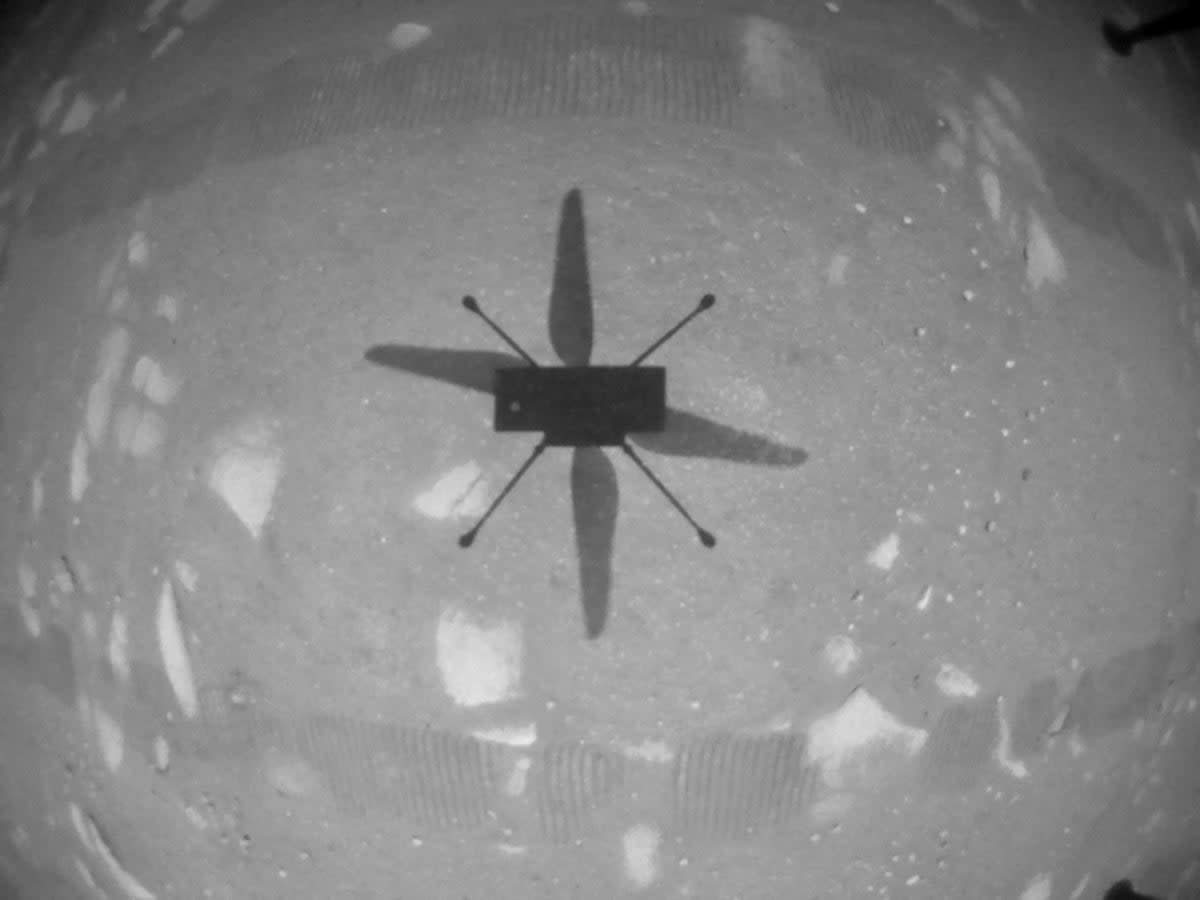Nasa grounds Mars helicopter Ingenuity as dust and winter threaten flights

Nasa’s pioneering Mars helicopter, Ingenuity, has been grounded amid the coming Martian winter.
The craft will not fly until August, the space agency said.
“It’s now dust season and winter on Mars, meaning there’s more dust in the air and less sunlight to help recharge Ingenuity’s batteries,” Nasa said in an update. “Dust levels are expected to subside later in July, so the team has decided to give the helicopter’s batteries a break for a few weeks and build their daily state of charge back up.
“Weather permitting, Ingenuity is expected to be back in the air around the start of August.”
Nasa’s Ingenuity helicopter arrived at Mars attached to the Perseverance rover, in February last year. Months later, it managed to successfully deploy and make its way across the planet.
The helicopter was only ever intended as a demonstration, and a way of testing the technology so that it could inform future missions. But Ingenuity vastly exceeded initial expectations, and it has since made dozens of flights.
In March, Nasa said that it expected Ingenuity to keep flying at least until September, and that it would be undertaking flights over different terrain from that it had explored before.
“Less than a year ago we didn’t even know if powered, controlled flight of an aircraft at Mars was possible,” Thomas Zurbuchen, the associate administrator of Nasa’s Science Mission Directorate, said at the time.
“Now, we are looking forward to Ingenuity’s involvement in Perseverance’s second science campaign. Such a transformation of mindset in such a short period is simply amazing, and one of the most historic in the annals of air and space exploration.”
